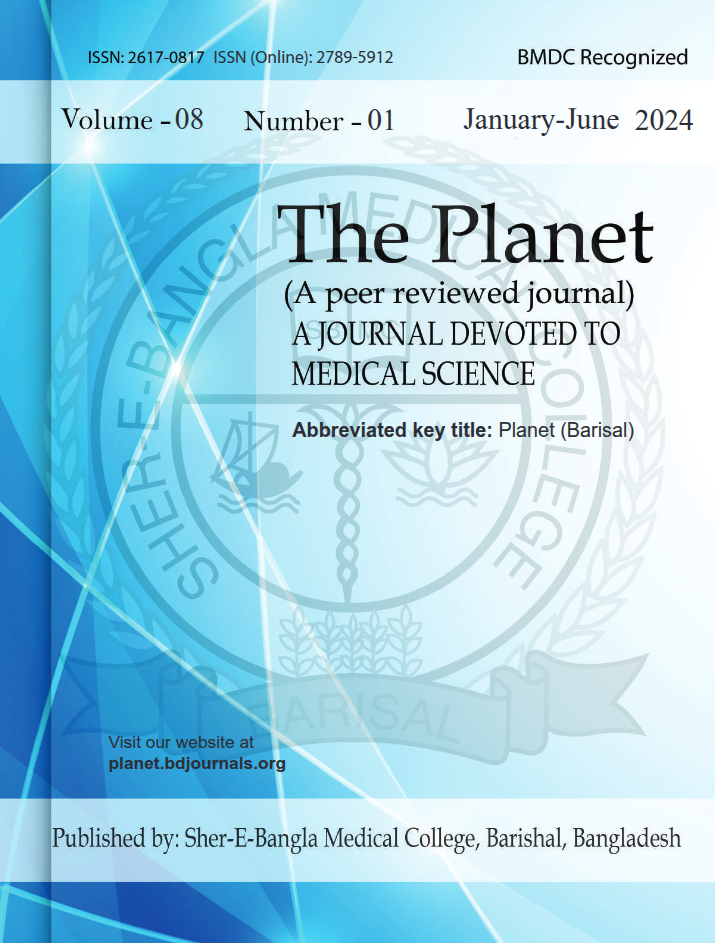Impact of Risk Factors on Imaging Findings in Hepatocellular Carcinoma (HCC) Diagnosis — A Comprehensive Study of USG and CT-Scan
Published 28-12-2024
Keywords
- Hepatocellular-carcinoma,
- Ultrasonography,
- CT-Scan
Copyright (c) 2024 The Planet

This work is licensed under a Creative Commons Attribution 4.0 International License.
How to Cite
Abstract
Introduction: Hepatocellular carcinoma (HCC) is a leading cause of cancer-related mortality globally, particularly prevalent in regions with high rates of chronic hepatitis B and C infections. Early detection is crucial, and imaging plays a key role in diagnosing HCC. Methods & Materials: This cross-sectional study, conducted from June 2007 to May 2008 at BIRDEM, BSMMU, and Gastroliver Hospital in Dhaka, involved 30 patients clinically suspected of having HCC. Patients underwent both USG and CT scans, with diagnosis confirmed by biopsy. Demographic, clinical, and biochemical data were collected, and imaging findings were correlated with histopathology. Sensitivity, accuracy, and predictive values of USG and CT were calculated using SPSS software. Results: The study found that CT had slightly better sensitivity (92%) than USG (88%) for detecting HCC. Both imaging techniques exhibited low specificity (20%). CT was superior in detecting multifocal lesions (43.3% vs. 16.7% in USG, p < 0.05) and lesions in the 5-10 cm range (73.3% vs. 50%, p = 0.009). Post-contrast CT scans showed heterogeneous enhancement in 70% of cases, indicating its utility in differentiating HCC from benign conditions. Conclusion: This study evaluates the impact of imaging modalities and risk factors in diagnosing hepatocellular carcinoma (HCC). CT scans demonstrated higher sensitivity and effectiveness in detecting multiple lesions, while ultrasound (US) proved useful for initial screening. Future research should explore combining imaging techniques and biomarkers for improved diagnosis, alongside the potential of advanced technologies like MRI and elastography, especially in resource-limited settings.



